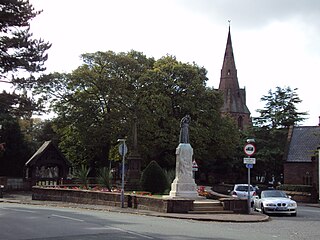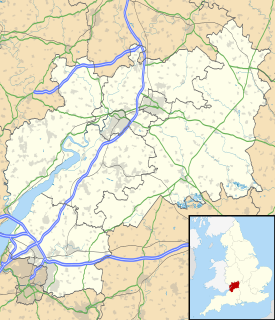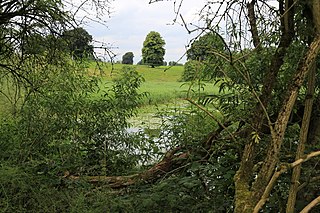Related Research Articles

Merseyside is a metropolitan and ceremonial county in North West England, with a population of 1.38 million. It encompasses the metropolitan area centred on both banks of the lower reaches of the Mersey Estuary and comprises five metropolitan boroughs: Knowsley, St Helens, Sefton, Wirral and the city of Liverpool. Merseyside, which was created on 1 April 1974 as a result of the Local Government Act 1972, takes its name from the River Mersey and sits within the historic counties of Lancashire and Cheshire.

Birkenhead is a town in the Metropolitan Borough of Wirral, Merseyside, England; historically, until 1974, in Cheshire. It is on the Wirral Peninsula, along the south bank of the River Mersey, opposite the city of Liverpool. At the 2011 census, it had a population of 88,818.
The Cheshire Wildlife Trust (CWT) is a wildlife trust covering the county of Cheshire and parts of the counties of Greater Manchester and Merseyside, England. The trust's chairman is Bill Stothart. It manages 43 nature reserves totalling over 470 hectares, including:

Port Sunlight is a model village and suburb in the Metropolitan Borough of Wirral, Merseyside. It is located between Lower Bebington and New Ferry, on the Wirral Peninsula. Port Sunlight was built by Lever Brothers to accommodate workers in its soap factory ; work commenced in 1888. The name is derived from Lever Brothers' most popular brand of cleaning agent, Sunlight.

Bidston is a village, a parish and a suburb of Birkenhead, on the Wirral Peninsula, in the modern county of Merseyside. The area is a mixture of the well-preserved Bidston Village, Bidston Hill, a modern housing estate, and the Bidston Moss nature reserve, industrial estate and retail park.

New Ferry is an urban area on the Metropolitan Borough of Wirral, Merseyside, England. It is located on the Wirral Peninsula, with the River Mersey to the east and the town of Bebington to the west. Within the boundaries of the historic county of Cheshire, the area was developed from the early nineteenth century.

Eastham is a village and an electoral ward of the Metropolitan Borough of Wirral, in Merseyside, England. Historically, it was part of Cheshire. It is situated on the Wirral Peninsula, to the south of Bromborough and to the east of Willaston. At the 2001 Census, it had a population of 12,250, although the total ward population for the town stood at 13,637. In 2011 the town's population was not measured separately but a review was carried out for the ward. The total population had risen to 13,882 of which 6,730 were males and 7,152 females.

Tranmere is a suburb of Birkenhead, on the Wirral Peninsula, England. Administratively, it is within the Birkenhead and Tranmere Ward of the Metropolitan Borough of Wirral, in Merseyside. Before local government reorganisation on 1 April 1974, it was part of the County Borough of Birkenhead, within the geographical county of Cheshire.

Wirral, also known as The Wirral, is a peninsula in North West England. The roughly rectangular peninsula is about 15 miles (24 km) long and 7 miles (11 km) wide and is bounded by the River Dee to the west that forms a boundary with Wales, the River Mersey to the east, and the Irish Sea to the north.

The Cotswold Water Park is the United Kingdom's largest marl lake system, straddling the Wiltshire–Gloucestershire border, northwest of Cricklade and south of Cirencester. There are 180 lakes, spread over 42 square miles (110 km2).

The Wirral line is one of two commuter railway lines operated by Merseyrail and centred on Merseyside, England, the other being the Northern line.

The Wirral Country Park is a country park on the Wirral Peninsula, England, lying both in the Metropolitan Borough of Wirral in the county of Merseyside and in the borough of Cheshire West & Chester in the county of Cheshire. It was the first designated country park in Britain, opening in 1973.

Birkenhead Woodside was a railway station at Woodside, in Birkenhead, on the Wirral Peninsula, Cheshire. It was served by local services in Cheshire as well as long-distance services to southern England, including London.

Burton Mere Wetlands is a nature reserve on the Dee Estuary straddling the border between Cheshire, England and Flintshire, Wales. It is run by the Royal Society for the Protection of Birds (RSPB) and incorporates the older Inner Marsh Farm reserve. It lies near the village of Burton, about 3 kilometres (1.9 mi) south of Neston. It has all been developed by the RSPB and includes a large area of mixed wetland habitats, bluebell woodlands, and arable fields all managed to attract wildlife.

Hooton is a suburban village on the Wirral Peninsula, within the unitary authority of Cheshire West and Chester and the ceremonial county of Cheshire, England. It was once a separate village but was incorporated into Ellesmere Port as the town expanded outwards during the twentieth century.

Totternhoe Knolls is a 13.1 hectare Site of Special Scientific Interest (SSSI) in Totternhoe in Bedfordshire. It is also a local nature reserve, and part of the Chilterns Area of Outstanding Natural Beauty. The site is owned by Central Bedfordshire Council and leased to the National Trust. Most of the site is maintained jointly by the National Trust and the Wildlife Trust for Bedfordshire, Cambridgeshire and Northamptonshire (WTBCN), and is part of the WTBCN Totternhoe nature reserve, which also includes Totternhoe Chalk Quarry and Totternhoe Stone Pit. The SSSI also includes Totternhoe Castle, the earthworks of a Norman motte-and-bailey castle which is a Scheduled monument.

The Birkenhead Railway was a railway company in England. It was incorporated as the Birkenhead, Lancashire and Cheshire Junction Railway (BL&CJR) in 1846 to build a line connecting Chester and the manufacturing districts of Lancashire by making a junction near Warrington with the Grand Junction Railway. The BL&CJR took over the Chester and Birkenhead Railway in 1847, keeping its own name for the combined company until it shortened its name to The Birkenhead Railway in 1859. It was taken over jointly, on 1 January 1860, by the London and North Western Railway (LNWR) and the Great Western Railway (GWR). It remained a Joint Railway until Nationalisation of the railways in 1948.

Gunnersbury Triangle is a 2.57-hectare (6.4-acre) local nature reserve in the London boroughs of Ealing and Hounslow, immediately to the east of Gunnersbury. It was created in 1983 when, for the first time in Britain, a public inquiry ruled that a planned development of the land could not go ahead because of its value for nature. It opened as a nature reserve in 1985.

Marbury Reedbed Nature Reserve is a 6-hectare (15-acre) nature reserve located at the western end of Budworth Mere, north of Northwich, Cheshire, England. It is managed by the Cheshire Wildlife Trust under lease from the Royal Society for Nature Conservation, which purchased the land by public subscription in 1934 as a memorial to the Cheshire naturalist Thomas Coward.

Eastham Country Park is a country park located in Eastham, Wirral. The park is situated next to the River Mersey and covers an area of 100 acres (40 ha). Facilities at the park include a visitor information centre, tea garden and picnic areas. There are two jetties that were formerly used to ferry people and goods from Wirral to Liverpool with the road leading to the park called 'Ferry Road.'
References
- 1 2 "New Ferry Butterfly Park". Cheshire Wildlife Trust. Retrieved 11 June 2011.
- ↑ "New Ferry Butterfly Park". New Ferry Online. New Ferry Regeneration Action Group. Archived from the original on 6 November 2012. Retrieved 10 October 2011.
- ↑ Jackson, Ian (5 July 2011). "Photoblog: New Ferry Butterfly Park and Sculpture Trail". ArtinLiverpool.com. Retrieved 10 October 2011.
- 1 2 Hughes, Lorna (30 June 2011). "New Ferry Butterfly Park Wins Legal Battle to Stay Open". Liverpool Daily Post. Retrieved 10 October 2011.
- ↑ Murphy, Liam (7 January 2010). "Wirral Council Secret Report Recommends Buying New Ferry Butterfly Park". Wirral News. Retrieved 10 October 2011.